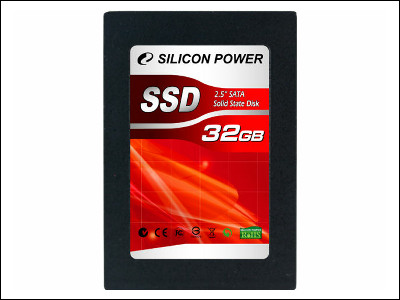SSD compatible with PCIe 5.0 is on sale, Bakadeca heat sink is a hot topic

The sale of SSDs compatible with '
First wave of PCIe 5.0 SSDs arrives with high prices and ridiculous heatsinks | Ars Technica
https://arstechnica.com/gadgets/2023/03/first-wave-of-pcie-5-0-ssds-arrives-with-high-prices-and-ridiculous-heatsinks/
All PCs centered around AMD's Ryzen 7000 series chips and some with Intel's 12th or 13th Gen CPUs support PCIe 5.0 capable SSDs up to 2x faster than PCIe 4.0 doing. Technology media Ars Technica points out that SSDs compatible with PCIe 5.0 have just begun to be sold, so they are very expensive like many other early adapter products.
PCIe 5.0 compatible SSDs include GIGABYTE 's AORUS Gen5 10000 SSD (capacity: 2TB, sequential read speed up to 10GB/s, sequential write speed up to 9.5GB/s) and Micro Center 's Inland TD510 (capacity: 2TB, sequential read speed up to 10GB/s, sequential write speeds up to 9.5GB/s), both of which are faster than Samsung's PCIe 4.0 SSD 990 PRO (sequential read speeds up to 7.45GB/s, sequential write speeds up to 6.9GB/s). Data transfer speed is fast.
However, Ars Technica points out that even if you have a compatible PC at hand, you can't always use these SSDs. One reason is that PCIe 5.0 SSDs sell for more than double the price of superior PCIe 4.0 SSDs. AORUS Gen5 10000 SSD is sold for $ 340 (about 46,000 yen), Inland TD510 is sold for $ 349.99 (about 48,000 yen).
Also, PCIe 5.0 compatible SSD 'The heat sink is ridiculous,' Ars Technica. AORUS Gen5 10000 SSD features M.2 Thermal Guard XTREME, a dedicated heatsink that consists of two heatpipes and stacked fins with advanced thermal nano-carbon processing. At the top of the image below is the M.2 Thermal Guard XTREME, which is much larger than the SSD itself (bottom). Therefore, Ars Technica points out, ``In some environments, the AORUS Gen5 10000 SSD cannot be installed even if it is compatible.''

The Inland TD510 looks like below, and while it doesn't have as huge a heatsink as the aforementioned AORUS Gen5 10000 SSD, it does have a small fan attached to the power cable that can make some noise when in use. . Also, it doesn't have a controller to control the fan speed, so the fan will always spin at a constant speed regardless of whether the drive is under load or not.

On the other hand, Ars Technica points out that many SSDs compatible with PCIe 4.0 use slim heat sinks so that they can also support PS5 expansion SSDs. Since it is not equipped with a fan, it does not emit noise, and the heat sink is slim, so it can be installed in most PCs without problems. Mid-end to high-end motherboards include one or more SSD heatsinks, so installing an existing PCIe 5.0 SSD here requires either removing the standard heatsink or using a standard heatsink to support the SSD. It must be used to prevent thermal runaway.
The selling price of PCIe 5.0 compatible SSDs may drop as the number of compatible products increases, and the emergence of NAND chips with advanced manufacturing processes can also be expected to lower operating temperatures. Therefore, Ars Technica wrote, ``It seems better to wait for the appearance of subsequent products without touching the initial products of PCIe 5.0 compatible SSDs in terms of price and design.''
Related Posts:
in Hardware, Posted by logu_ii







